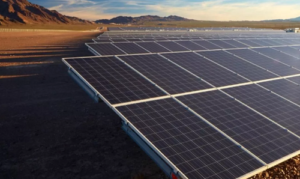Solar panels are moving towards the forefront of modern technology, about renewable energy and cost-effective power generation. By converting the heat energy of the sun into usable energy, solar panels can limit the use of fossil fuels and other environmentally harmful energy around the world.
The role of solar panels is still relatively powerful. For example, installing solar panels on the roof can provide power to the electrical appliances (air conditioners, fans, lamps) in the house, or it can be used in public areas to provide energy to traffic warning lights, provide power to street lights, and ensure safe travel. It has gradually penetrated into all aspects of clothing, food, housing, transportation, and so on.
Previously, I talked about the method of calculating the power of solar panels: length * width * conversion efficiency of cells *0.1= power (unit: cm), so how much power can a square meter of solar panels produce? Take monocrystalline silicon as an example: 100*100*19.5%*0.1 (calculated by monocrystalline silicon) =195w, but there will be a little damage, because this square meter is based on the actual situation of all cells, but there will be a space between solar panels in a square meter, There will also be some other factors. About one square meter can generate about 150w-170w of electricity.
The following will introduce what power will affect the power generation of one square meter of solar panels:
Tilt direction of solar panels: if your solar panels tilt towards due north or south, they may not experience as much sunlight as those facing directly above or east or west.
Pollution. In cities and regions with extreme pollution, such as valleys with inverted emissions or metropolises such as Los Angeles, solar panels are prone to dust accumulation after being placed for too long, and sunlight cannot be directed to solar panels.
Regional location: it is best to install solar panels in areas with warm climate all year round, and the time to obtain direct sunlight is also relatively long.
Weather: on particularly cloudy, stormy or rainy days, your solar panels will produce less or even no energy and electricity.
The above is what Xiaobian thought for the time being. Welcome to the comment area to add. If you want to know more about solar panels, please contact us.





